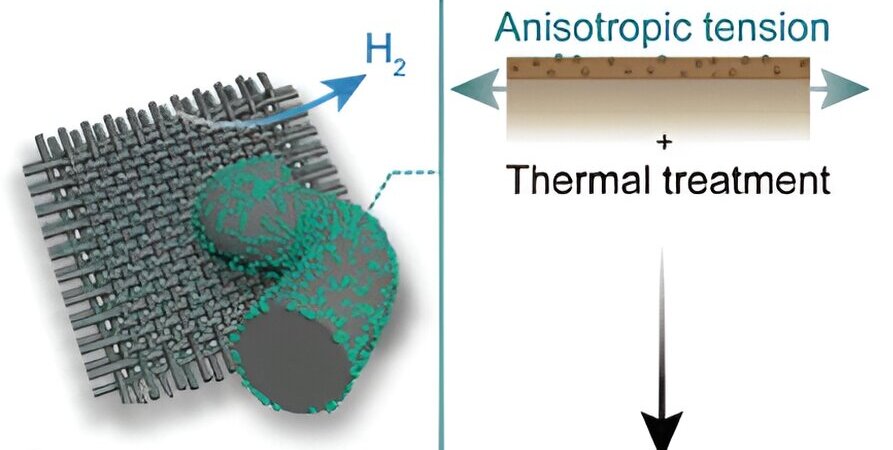Revolutionizing Hydrogen Production: Sustainable and Cost-Effective Carbon Fabric Electrodes
Key Ideas
- A new technology developed by a team of researchers led by Professor Han Gi Chae and Professor Jong-Beom Baek enables large-scale green hydrogen production at a low cost.
- The innovative carbon fabric electrocatalysts embedded with ruthenium show remarkable stability and efficiency, with a lifespan 100 times longer than conventional electrodes.
- By using ruthenium instead of platinum and integrating it into the polymer precursor fiber early in the manufacturing process, the electrodes demonstrate low overvoltage and reduced manufacturing costs.
- The research paves the way for stable, binder-free, and flexible electrocatalytic electrodes with potential applications in various catalytic reactions, offering energy-efficient processes and waste reduction.
Researchers have developed a new technology to address the limitations of current catalyst electrodes, leading to the production of green hydrogen on a large scale at a relatively low cost. Led by Professor Han Gi Chae and Professor Jong-Beom Baek, the team collaborated with Professor Kafer T. Tavuz to create carbon fabric electrocatalysts embedded with highly functional catalysts using a conventional manufacturing process. This innovative design offers stable operation across large areas, showcasing a lifespan 100 times longer than conventional electrodes. Notably, the electrodes maintain optimal performance by utilizing ruthenium instead of platinum, reducing manufacturing costs significantly.
Traditionally, electrodes were manufactured by spraying a powder catalyst onto the electrode, leading to challenges such as uneven application and detachment. The shift to carbon fiber-based electrodes offers high thermal and electrical conductivity properties and ease of use across large surfaces. By integrating ruthenium into the polymer precursor fiber during manufacturing, the team achieved enhanced stability of the catalyst. The ruthenium surface–embedded fabric electrocatalysts demonstrated low overvoltage and remarkable stability during hydrogen generation.
The new carbon fiber electrode design operates at a significant cost advantage compared to traditional platinum-based electrodes. By leveraging the mechanical and electrical properties of carbon fibers, the researchers achieved maximum stability and activity. The research opens doors for stable, binder-free, and flexible electrocatalytic electrodes with potential applications in various catalytic reactions. The technology not only offers energy-efficient manufacturing processes but also reduces waste production, making it a significant step towards sustainable hydrogen production.
Topics
Green Hydrogen
Innovation
Sustainability
Energy Efficiency
Research
Catalysts
Carbon Fiber
Manufacturing Process
Electrodes
Latest News
